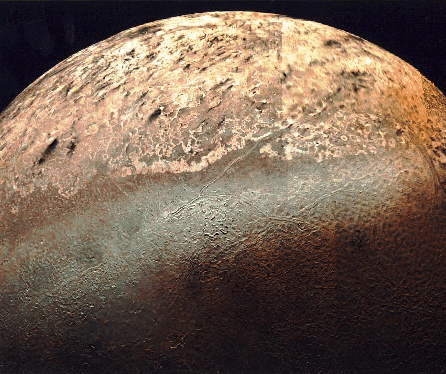Triton: Neptune's Largest Moon

Explanation:
On October 10th, 1846,
William
Lassell
was observing the
newly discovered
planet
Neptune. He was attempting
to confirm his observation, made just the previous week,
that
Neptune
had a ring.
But this time he discovered
that
Neptune
had a satellite as well. Lassell soon proved that the ring
was a product of his new telescope's distortion, but the satellite
Triton
remained. The above picture of
Triton
was taken in 1989 by the only spacecraft ever to pass
Triton:
Voyager 2.
Voyager 2 found fascinating terrain,
a thin atmosphere, and even evidence for ice volcanoes on this
world of peculiar orbit and spin. Ironically,
Voyager 2 also confirmed the existence of complete thin rings around Neptune
- but these would have been quite invisible to Lassell!
Authors & editors:
Robert Nemiroff
(MTU) &
Jerry Bonnell
(USRA)
NASA Web Site Statements, Warnings,
and Disclaimers
NASA Official: Jay Norris.
Specific
rights apply.
A service of:
LHEA at
NASA /
GSFC
& Michigan Tech. U.

